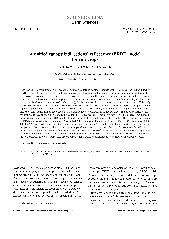摘要
Row sowing is a basic crop sowing method in China, and thus an accurate Bidirectional Reflectance Distribution BRDF) model of row crops is the foundation for describing the canopy bidirectional reflectance characteristics and estimating crop ecological parameters. Because of the macroscopically geometric difference, the row crop is usually regarded as a transition between continuous and discrete vegetation in previous studies. Were row treated as the unit for calculating the four components in the Geometric Optical model (GO model), the formula would be too complex and difficult to retrieve. This study focuses on the microscopic structure of row crops. Regarding the row crop as a result of leaves clumped at canopy scale, we apply clumping index to link continuous vegetation and row crops. Meanwhile, the formula of clumping index is deduced theoretically. Then taking leaf as the basic unit, we calculate the four components of the GO model and develop a BRDF model for continuous vegetation, which is gradually extended to the unified BRDF model for row crops. It is of great importance to introduce clumping index into BRDF model. In order to evaluate the performance of the unified BRDF model, the canopy BRDF data collected in field experiment, "Watershed Allied Telemetry Experiment Research (WATER)", from May 30th to July 1st, 2008 are used as the validation dataset for the simulated values. The results show that the unified model proposed in this paper is able to accurately describe the non-isotropic characteristics of canopy reflectance for row crops. In addition, the model is simple and easy to retrieve. In general, there is no irreconcilable conflict between continuous and discrete vegetation, so understanding their common and individual characteristics is advantageous for simulating canopy BRDF. It is proven that the four components of the GO model is the basic motivational factor for bidirectional reflectance of all vegetation types.
- 出版日期2012-5
- 单位北京大学
